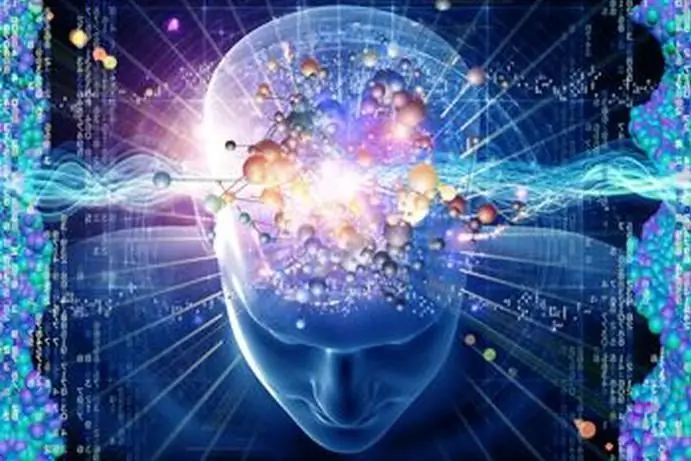2026 Author: Howard Calhoun | [email protected]. Last modified: 2025-01-24 13:10:39
Coming to a driving course, not every person is ready for the fact that, in addition to learning the rules of behavior on the road, he will have to study the psychophysiological foundations of the driver's activity. But these issues are no less important than the skill of owning a car. After all, these classes will help to know yourself and your own emotional state, which will help not only behind the wheel of a car, but also in later life.
Psychophysiology of the driver
Psychophysiological foundations of the driver's activity - the driver's perception of the surrounding situation, reactions, attentiveness, perception, operational thinking.

Sensations - as one of the psycho-physiological aspects - are manifested by the reflection in the driver's mind of individual phenomena and properties of objects that affect his senses. Thus, they distinguish: auditory, motor, visual, skin, vibration and olfactory reactions.
Perception iscontrol of the senses, accurate assessment of spatial relationships, speed of information processing.
Psychomotor reaction is manifested in the speed and accuracy of the driver's response to critical situations. Revealing the exact psychomotor coordination of movements.
Mindfulness is manifested in the ability to quickly switch your attention from one subject to another and evaluate them as a whole.
Emotional-volitional reaction is stress resistance, a high level of such qualities as: self-control, perseverance, determination.
Operational thinking is manifested in the assessment of the traffic situation, making quick and adequate decisions, the ability to predict the situation.

Physical training, technical knowledge and especially psycho-physiological ones are important for a driver. The activity of the driver is given special attention in matters of psychology, it is impossible to ignore the study of these moments. Of course, the skill of driving a driver is acquired with experience and over time, but the fact that a person has certain character traits determines the psychological readiness for difficult work, such as driving a car.
Psychophysiological basis of the driver's activity. Ethics Education Program
The ethical foundations of the driver's profession are observance of the rules of the road, the ability to use them in various situations, strictly observe them, showing respect for other drivers and pedestrians. Thus, the character traits of a person are very oftenmanifest themselves precisely in the behavior on the road.

There are features of the driver's psychophysiological activity on the roads:
- The driver must respect the pedestrian, passing him. This is especially important at unregulated intersections and when cornering. It should never be forgotten that every driver is a pedestrian from time to time, as well as his relatives and children.
- Do not dazzle colleagues with high beams. Every driver knows how unpleasant and dangerous it is when an oncoming or overtaking car blinds with its headlights.
- Don't race and obstruct the passage of another car, even if the driver is in a hurry, give way to him without creating an emergency on the road.
- No need to fidget on the road, moving from one lane to another, strictly follow the rules of the road, warning other drivers of upcoming maneuvers.
- If you see that the car is in a difficult situation and is standing on the side of the road, do not drive past.
- When getting ready to park your car, you should not think only about your own comfort, taking up more space than allotted for one car, or blocking the exit for another.
Driver attention
The concept of "mindfulness" defines the driver's ability to focus on the object of danger, quickly review and assess the situation as a whole. At low and medium speeds, the driver can easily evaluate dozens of surrounding situations and objects. A very important qualityfor the driver is the ability to focus on the most important object or emergency and quickly decide on the most comfortable avoiding it or causing minimal harm, as well as the ability to predict the possible development of events.

A driver's attention can be both scattered and distributed. In standard and non-hazardous situations, the driver's attention is distributed. He can calmly assess the environment on his way. Concentrated attention is manifested when a dangerous situation arises. The driver focuses all his attention on only one object or situation.
Driver responsiveness
Perhaps the most important psycho-physiological foundations of a driver's activity are quick reactions. Since it is not enough to notice, evaluate and predict the situation, it is very important to respond quickly so that the decision taken is translated into action and fulfills its main purpose - the elimination of an emergency or potentially dangerous situation.
From a scientific point of view, the reaction is divided into three stages: assessing the situation, making an informed decision, and performing prompt actions. The faster this chain occurs in the mind of the driver, the faster his reaction to the current situation manifests itself. Thus, it can be determined that the skill of the driver is approximately 70% dependent on the ability to react quickly, since the time allotted for decision-making is sometimes calculated even less thanseconds.
Basic for effective driver communication

Any driving school will teach not only driving techniques, but also the basics of effective communication. Such EMKD "Psychophysiological foundations of the driver's activity" is required to pass and is important. It is divided into several different sections and topics. Among them:
- Psychophysiological basis of the driver's activity.
- Cognitive functions of the perceptual system.
- Ethical norms and rules.
- Emotional state, conflict prevention.
Emotional state
Perhaps this is one of the most important sections of the psychology of the driver. In a driving school, classes on this topic will definitely be held, in which, with the help of a teacher and fellow students, small dramatizations of possible conflict situations on the road will be staged, using aggression from the interlocutor. A psychologist teacher will definitely help and teach you how to get out of these situations with minimal losses for your psycho-emotional state. He will also explain with examples how this or that situation can be dangerous and how to avoid its negative development.
Physical preparation of the driver
For a driver, sports are as important as for any other person. For example, with various types of breakdowns, physical strength may be required to eliminate them. In addition, it is very important to train your coordination and reactions, which will definitely come in handy on the road and can even save someone.life. Sports or games that involve a high level of concentration, a certain speed of reactions, training of peripheral and central vision, as well as coordination of movements will be very useful for the driver. This will help: small and big tennis, sports, skiing, rowing, swimming, skating, paintball and similar activities.
Driver safety
Not only the driver's ability to cope with the situation on the road, but also his experience can be decisive in a dangerous situation. At the end of the course "Psychophysiological foundations of the driver's activity", the tests offered to you for passing will help determine your psychological readiness to be on the road as a driver.

Also, one should not neglect simple safety rules regarding the physical condition of a person. If the driver feels unwell or unpleasant sensations in his own body, it is necessary to stop and pay attention to the state of his he alth in order to avoid sudden seizures, accidents and death. And also, do not ignore the body's need to quench your thirst, as recent studies have shown that dehydration corresponds to a state of intoxication. Do not ignore the need for rest or physical activity. If the limbs or muscles are numb and tired, you need to stop and stretch a little. These actions will help prevent accidents and human casu alties on the road.
Fundamentals of psychophysiology of labordrivers are not difficult to understand and perform. Every right move and observance of traffic rules saves not only your own life, but also the passengers sitting nearby, as well as pedestrians and other drivers.
Recommended:
Intensity of labor is a socio-economic category that characterizes the degree of tension of the labor force in the labor process. Characteristics, calculations

Intensity of labor is a category that simultaneously refers to socio-economic, physiological, and a number of others. This concept is measurable. It should not be confused with labor productivity - rather, these are reverse order values
Foreign economic activity is Management of foreign economic activity

Foreign economic activity is the activity of the state in the sphere of the economy outside of domestic trade. It has many different aspects, but all of them are somehow connected with the market, the promotion of various kinds of services on it: transportation, sale of goods. In fact, it is a complex system consisting of many interdependent links
Manager for foreign economic activity (foreign economic activity): tasks, duties, requirements

Foreign trade manager - who is this? Two main lines of business and day-to-day tasks. The main duties of a specialist. Requirements for the applicant, the necessary personal qualities. Consider the pros and cons of the profession. How to become a foreign trade manager? Getting started and career advancement. The question of wages
FSS: confirmation of the type of activity. When and how to confirm the main activity in the FSS

According to the updated legislation, all business entities must confirm the main type of economic activity (OVED). In 2017, this procedure has undergone some changes. What did they touch: documents, deadlines or responsibility? Let's try to figure it out
Professional activity - what is it? Professional activity: spheres, goals, types, features

What is a professional activity? The article attempts to comprehend the content of this concept, to understand what are the features and ethics of professional activity

